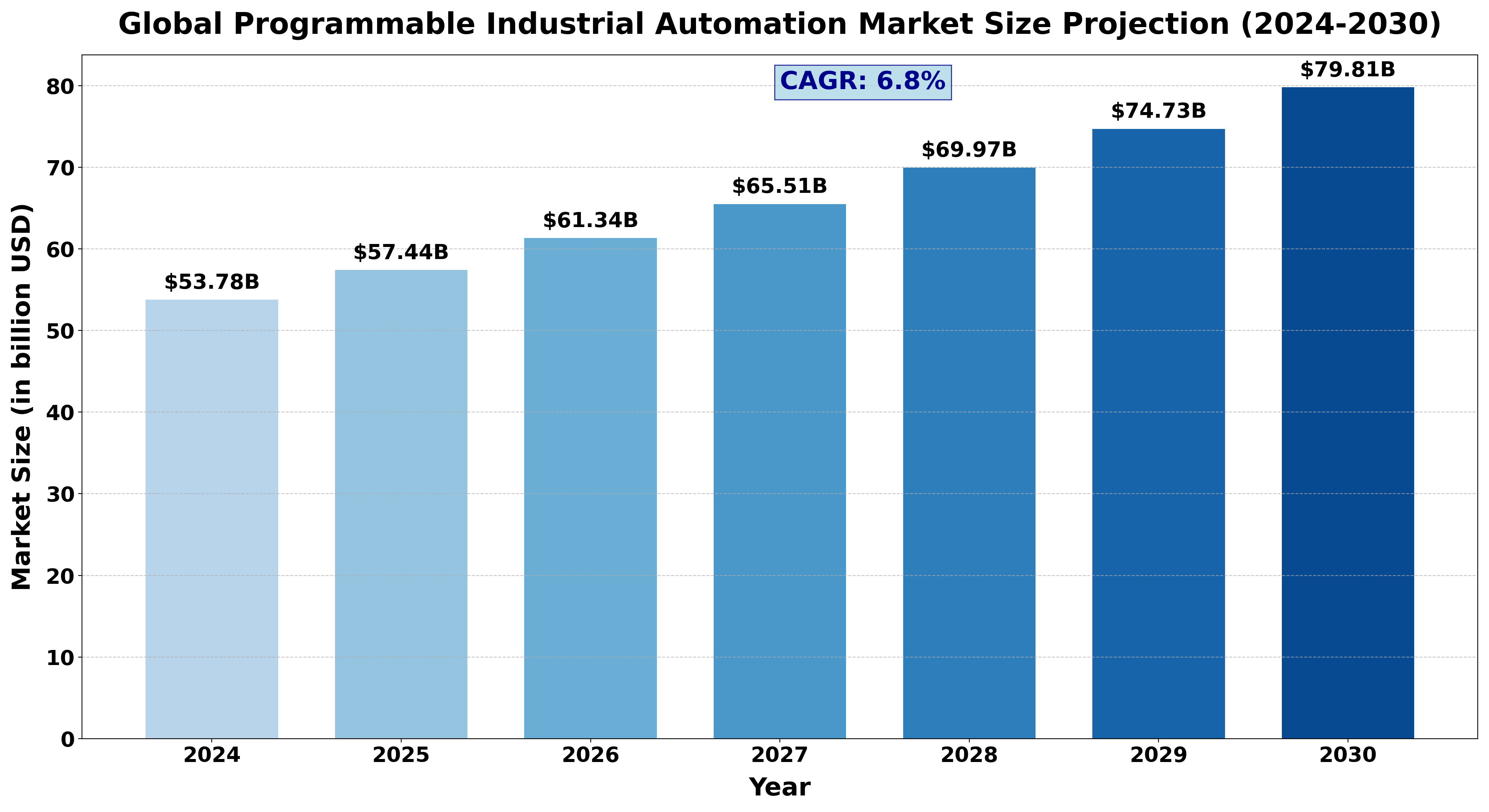TOP CATEGORY: Chemicals & Materials | Life Sciences | Banking & Finance | ICT Media

The global Programmable Industrial Automation market size was valued at US$ 53.78 billion in 2024 and is projected to reach US$ 79.81 billion by 2030, at a CAGR of 6.8% during the forecast period 2024-2030.
The United States Programmable Industrial Automation market size was valued at US$ 15.23 billion in 2024 and is projected US$ 21.87 billion by 2030, at a CAGR of 6.2% during the forecast period 2024-2030.
Programmable Industrial Automation refers to the use of programmable logic controllers (PLCs), industrial PCs, and other programmable devices to control and monitor industrial processes, enhancing efficiency, productivity, and flexibility in manufacturing operations.

The global Programmable Industrial Automation market is growing steadily, driven by Industry 4.0 initiatives and the increasing adoption of smart manufacturing technologies. In 2023, total shipments of programmable automation controllers reached 12.5 million units, with the automotive sector accounting for 25% of demand. The food and beverage industry is the fastest-growing segment at 7.5% annually. The market saw a 30% increase in demand for edge computing-enabled controllers in 2023, reflecting the trend towards decentralized decision-making. PLCs dominate with a 45% market share, but industrial PCs are growing at 9% annually due to their versatility. Europe leads with a 35% market share, while Asia Pacific is the fastest-growing region at 8.2% CAGR. The industry is focusing on developing AI-integrated automation systems, with a 40% increase in R&D investments for self-optimizing production lines.
Report Overview
Industrial automation help end-user industries to optimize their operations through efficient control of various processes without any human intervention.
Programmable Industrial Automation Market provides a deep insight into the global Programmable Industrial Automation market covering all its essential aspects. This ranges from a macro overview of the market to micro details of the market size, competitive landscape, development trend, niche market, key market drivers and challenges, SWOT analysis, value chain analysis, etc.
The analysis helps the reader to shape the competition within the industries and strategies for the competitive environment to enhance the potential profit. Furthermore, it provides a simple framework for evaluating and accessing the position of the business organization. The report structure also focuses on the competitive landscape of the Global Programmable Industrial Automation Market, Programmable Industrial Automation Market introducesin detail the market share, market performance, product situation, operation situation, etc. of the main players, which helps the readers in the industry to identify the main competitors and deeply understand the competition pattern of the market.
In a word, Programmable Industrial Automation Market is a must-read for industry players, investors, researchers, consultants, business strategists, and all those who have any kind of stake or are planning to foray into the Programmable Industrial Automation market in any manner.
Global Programmable Industrial Automation Market: Market Segmentation Analysis
The research report includes specific segments by region (country), manufacturers, Type, and Application. Market segmentation creates subsets of a market based on product type, end-user or application, Geographic, and other factors. By understanding the market segments, the decision-maker can leverage this targeting in the product, sales, and marketing strategies. Market segments can power your product development cycles by informing how you create product offerings for different segments.
Key Company
Market Segmentation (by Type)
Market Segmentation (by Application)
Geographic Segmentation
Key Benefits of This Market Research:
Key Reasons to Buy this Report:
Frequently Asked Questions ?
